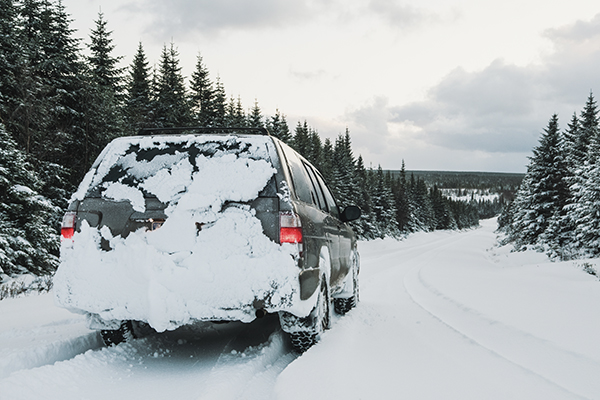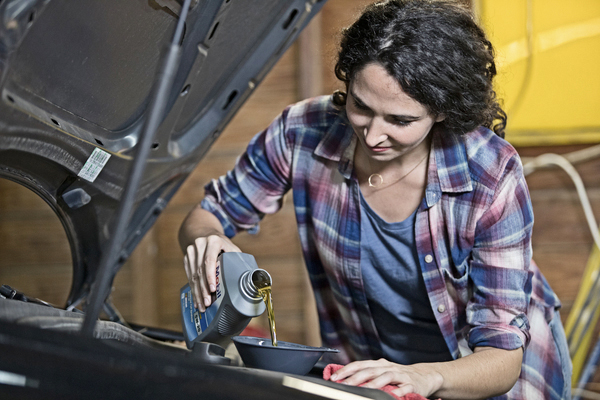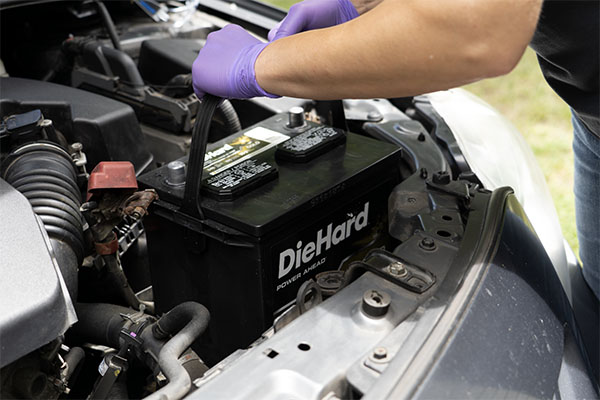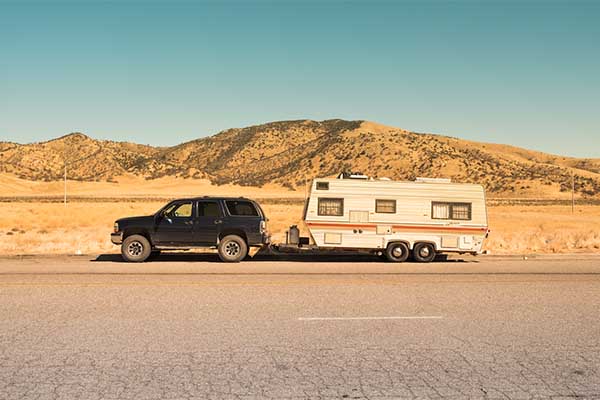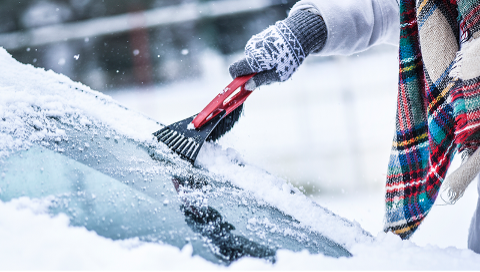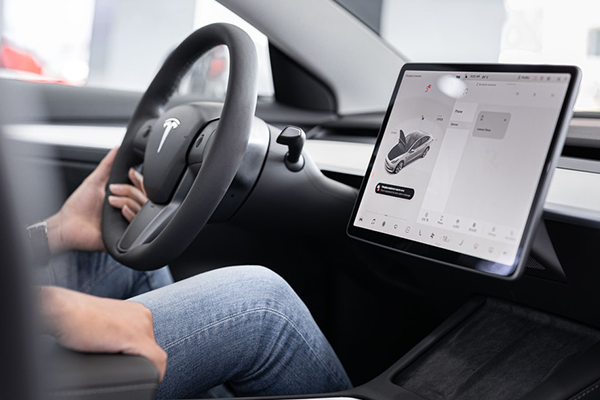More than ever, people are looking to maintain their vehicles at home. DIY projects are big money savers, plus it's rewarding to put valuable skills to good use. Still, knowing what exactly needs to be done on today's vehicles – and when to do it – can be challenging. That's why we've broken it all down for you by time and mileage in one comprehensive service schedule.
Note that every interval is in addition to the inspections and maintenance items listed before. So start at the top!

Regular Vs. Severe Service Schedule
This guide makes a great companion to your owner's manual. If you consult your manual, you might see two different schedules: regular and severe service. You may not think of your daily driving routine as "severe," but your car feels otherwise if you regularly experience:
- Stop-and-go traffic or idling
- Short commutes of five miles or less
- Heavier loads, including cargo, passenger, or towing
- Rough or mountainous roads
- Dusty or salty environments
- Extremely hot or below-freezing weather or a high humidity climate
If you frequently drive in any of these conditions, consider following the severe maintenance schedule. The added cost of more frequent oil and transmission fluid changes will be offset with fewer breakdowns and serious repairs.
As a rule of thumb, though, you can use this general car maintenance checklist to guide you. We've included links to our helpful DIY videos and articles to get you started.

Basic Car Maintenance Schedule
3 Months/3,000 Miles
1. Fluids. If your vehicle is newer, a monthly fluid check is probably not necessary. On older vehicles, however, catching a problem such as a leaking water pump or engine oil leak early can save plenty of time and money later. Set your calendar to remind you once every few months to do these quick, easy checks:
- Engine oil level – The oil level should be between the low and full line on the dipstick. If your oil light comes on in the time between these level checks, you'll need to check the level and top off on a monthly basis instead.
- Windshield washer fluid – You can't go wrong topping this one off whenever you're under the hood. It's too easy!
- Coolant – When the engine is cool, the level should be between the low and full lines on the reservoir.
- Brake fluid level – You're going to start noticing a pattern here… The level in the reservoir needs to be between low and full. If it's low, have your vehicle towed to a pro shop if you're not experienced in brake system repairs. Brake fluid is essential for your brakes to work, and a low fluid level indicates a serious safety issue.
- Transmission fluid – If you don't have a transmission dipstick, skip this one. If you do, you're going to look and smell the fluid. It shouldn't be too dark or have a bitter, burned smell.
- Power steering fluid – Check the level.
For more detail, read our guide to checking essential vehicle fluids.

2. Tire pressures – Again, this applies to older vehicles that either don't have pressures displayed (although you should be keeping an eye on the pressures even if they are displayed). Get in the habit of keeping proper pressures for optimal handling and fuel efficiency as well as prevention of costly abnormal wear or unsafe conditions.
3. Hoses – A good hose inspection requires looking and touching. Hoses should be free of leaking fluids and bulges which indicate internal failure. They should also not feel too hard, having a little flex, especially when warm.
4. Belt(s) – If you have a timing belt, this inspection does not apply because there is no easy way to view a timing belt. Timing belts should instead be changed based strictly on time and mileage, and it should be done on time. Serpentine belts, also commonly called drive belts, though, are easier to take a look at. Belts should not look glazed, cracked, or frayed.

5. Interior and exterior cleanliness – We promise we're not judging you when you eat your fries in the car. Keeping your vehicle clean inside and out helps protect your investment, and you'll thank yourself later when your resale value is tip top.
6 Months/5,000 Miles
1. Oil and Filter Change – There will be variation across vehicles here, so be sure to check your owner's manual. Engines that use conventional oil (not synthetic) are often on this oil change interval. Changing your oil is probably the most important maintenance for your engine, though, so don't fall behind on this one. And don't forget that filter!

2. Tire rotation – Rotating your tires is one of the best ways to maximize their life.
3. Lights – Some lights are more noticeable than others when they stop working. It's a good habit to go around and check the lights whenever you're waiting for the oil to drain.
4. Fuel filter – Check your owner's manual to see if this is a maintenance item on your vehicle, and consult our guide to replacing your fuel filter.
5. Battery – Check your battery and cables for corrosion of leaking fluid on the top of the case. Either of these will reduce the battery's performance, and cleaning corrosion is easy.
6. Cabin and Engine Air Filters – These filters generally can be changed once every 12 months, but it's good to check them more frequently, especially when driving in heavy dust or pollen areas. These filters are both great projects for new DIYers, and if you've never tried it before, see how easy it is with Ben from YouTube channel Gears and Gasoline in these quick videos:
How to Change a Cabin Air Filter
How to Change an Engine Air Filter
7. Wiper Blades – Operate your blades and check to see that they're not streaking or making patchy contact with the windshield. You can also run your finger along the length of the blade to feel for cracks. Economical blades probably need to be replaced every six months, while premium types can last two or even three times longer.

12 Months/10,000 Miles
1. Synthetic Oil and Filter Change – Many vehicles since 2010 use synthetic oil, which has a longer interval than conventional oil. The 12-month/10,000-mile interval is typical, but consult your manual to confirm the interval on your specific vehicle
2. Alignment – A vehicle in need of alignment is sometimes quite obvious, with pulls to one direction or wandering. Even if your vehicle tracks in a straight line, though, checking the alignment once every year or two is a good idea. Not every alignment issue will cause a pull but could still lead to premature wear on tires.
3. Brakes – Brake problems tend to make themselves known. Most commonly, worn pads will make a squealing sound by design. Because they're such an important safety item, though, we highly encourage periodic checks of all four brakes. Look at pad material, rotors, and inspect for brake fluid leaks. Unsure of how to do this? Take a look at our article on understanding your brakes.
Did we miss anything? Let us know how you maintain your vehicle in the comments below.
